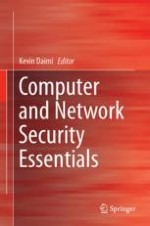2018 | OriginalPaper | Buchkapitel
12. Security Threats and Solutions for Two-Dimensional Barcodes: A Comparative Study
verfasst von : Riccardo Focardi, Flaminia L. Luccio, Heider A. M. Wahsheh
Erschienen in: Computer and Network Security Essentials
Aktivieren Sie unsere intelligente Suche, um passende Fachinhalte oder Patente zu finden.
Wählen Sie Textabschnitte aus um mit Künstlicher Intelligenz passenden Patente zu finden. powered by
Markieren Sie Textabschnitte, um KI-gestützt weitere passende Inhalte zu finden. powered by
